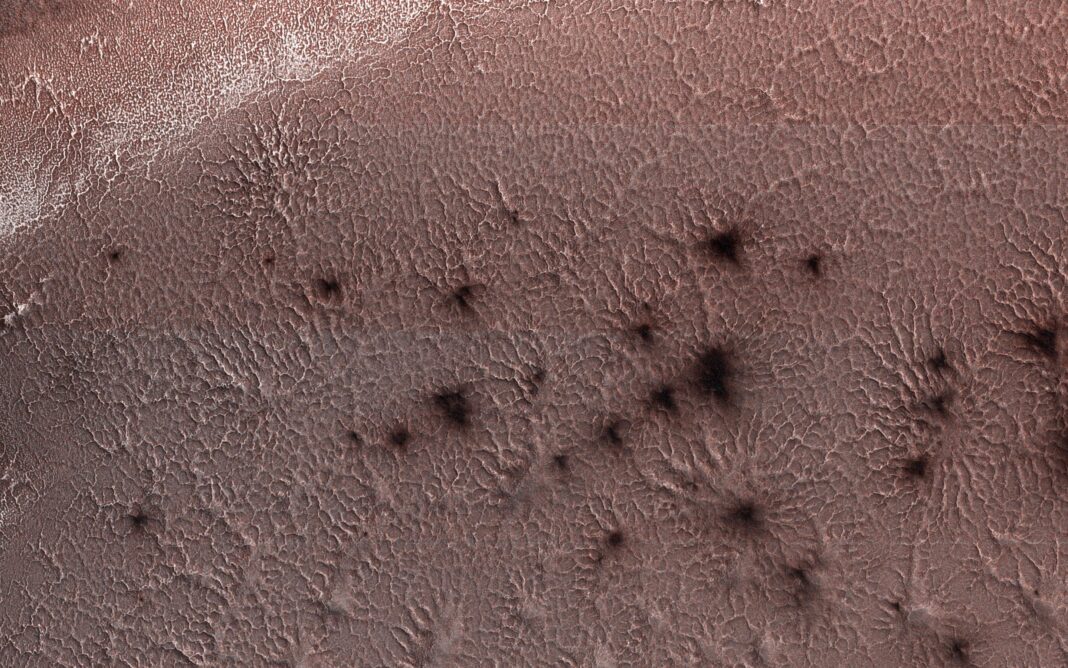The study provides the first physical evidence supporting that these spiders are a byproduct of shifting seasons of Mars and formed by the sublimation of CO2 ice.
A new study has explained the mystery behind ‘spiders from Mars.’ These spiders, which appear as dark blobs surrounded by worm-like disturbances, have always been a mystery to the scientists they are not found on Earth. Researchers from Trinity College in Dublin explained in a new study, published in the journal Scientific Reports, that the spiders referred to as araneiforms ‘believed to be carved into the Martian surface by dry ice changing directly from solid to gas in spring.’
The study provides the first physical evidence supporting that these spiders are a byproduct of shifting seasons of Mars and formed by the sublimation of CO2 ice. The Mars atmosphere contains mostly CO2, and as temperature drops in winter, the gas deposits on the surface as frost and ice. As the temperature rises, it directly turns from solid to gas through a process known as sublimation.
These splodges are ‘strange-looking negative topography radial systems of dendritic troughs; patterns that resemble branches of a tree or fork lightning.’
The team of scientists from Trinity College, Durham University and the Open University carried out a series of experiments recreating the conditions on the red planet to investigate if similar patterns would be formed by dry ice sublimation.
‘Mars simulation chamber’ was created using CO2 ice blocks and drilling holes in them. These were hovered over granular beds of different grain sizes before lowering the pressure in the chamber to Martian atmospheric pressure and the ice blocks were placed on the surface, according to the press release.
It states that a spider pattern was eroded by the escaping in each case. The spider patterns were more branched when finer grain sizes were used, while the pattern was less branched when coarser grains were used. The Leidenfrost effect was used to conduct the experiment.
Dr Lauren McKeown, who led the study, states it presents the first set of empirical evidence “for a surface process that is thought to modify the polar landscape on Mars.” She adds the experiments show that these Spider patterns can be “carved by the direct conversion of dry ice from solid to gas.













![Hotstar Premium Cookies 2019 [*100% Working & Daily Updated*] Hotstar Premium Cookies 2019 [*100% Working & Daily Updated*]](https://tahav.com/wp-content/uploads/2019/11/Hotstar-Premium-Cookies-Free-100x70.jpg)



